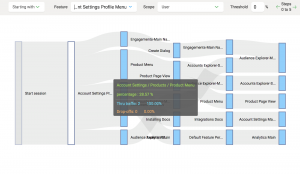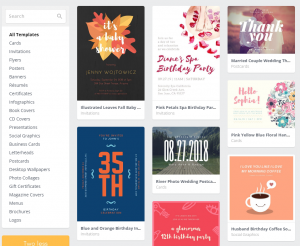
As I wrote my first blog on scaling Customer Success Teams several weeks ago I had a hard time narrowing down which topics to include and which to leave out so that the piece didn’t turn into a Tolstoy novel. There are many factors to consider as your team attempts to scale. So many in fact I decided to dedicate another post to it. Believe it or not, it was hard to narrow for this second one as well.
Now onto some additional tips and tricks that are too often overlooked as Customer Success teams begin to grow.
Internal Customer Service
I find that most companies spend considerable time and resources ensuring they have great external customer service but when it comes to internal customer service (service provided between teams at a company) there is often a lot left to be desired. As a CSM one of my biggest time sucks was the “follow up” game. Following up with the billing department to ensure that a customer’s invoice was truly corrected, following up with product development to see where on the roadmap a desperately needed feature enhancement was, following up with the training team to confirm that an additionally purchased training package was delivered. Sound familiar?
It is imperative that your company sets a culture of top notch internal customer service as well. Ensuring there are clear expectations across all departments in terms of responsibilities, turnaround times (our clients ask for SLAs from us, why shouldn’t we have them in place with our coworkers as well?), strong interdepartmental communication, clarity around priorities, and the like in an effort to ensure CSMs spend their days working with clients and not chasing down company staff for answers.
Client-to-client Collaboration
Much of a CSM’s time is often spent sharing best practices, as it should be, but there are ways to scale some of this as well. Customers love being able to talk directly to other customers. I have seen companies use everything from Slack to Salesforce’s ServiceCloud Community to Lithium and more as places for customers to gather, discuss, and share. Now, there is certainly some overhead involved in moderating these forums, but this approach allows for practices to be shared across all accounts and all CSMs and if done correctly, can help to create a true sense of community amongst your customer base.
Other ideas for scaling the sharing of best practice include face-to-face user groups where you bring multiple customers together to collaborate across a day or possibly more, writing up best practices and user stories into blogs/case studies that can be easily distributed, and recording Q&A webinars with seasoned customers. I’ve even had success bringing customers together on a monthly call to share their experiences with one another, ask for ideas on how to solve challenges, and serve as a place to celebrate their wins. Think: “how can we do more 1: many interactions and less 1:1 to help us best scale?”
Decreasing Email Disruptions
CSMs are often slaves to their inboxes. They are working on one issue and suddenly another one floats in, which seems more important, so they shift gears. Then a third email comes in which causes them to shift again before they ever get a chance to return back to the first email and so on. All the while as they are answering email after email after email none of their more strategic or project based work is getting accomplished.
Because, ideally, CSMs are not your first line of defense for support type questions (aka those that typically cause fire drills), do CSMs really need to feel like they have to immediately answer every email that comes into their inbox? Maybe, depending on your business, but I would encourage you to think of creative ways to help your CSMs timebox when they work emails. For example, they could crank emails for the first hour of the day, again around lunch, and for the last hour of the day but all other times they keep their inboxes closed so that they can perform QBRs, meet with your product team to advocate for needed features, review data to determine who may be at risk for churn and who may be ripe for expansion, etc.
Another suggestion is email days vs. project days. I have seen a few companies who have their CSMs respond to and work emails on Mondays, Wednesdays, and Fridays and leave Tuesdays and Thursdays for meetings, projects, etc. You certainly need to find what works best for your team, organization, and customers, but the bottom line is to ensure that entire days, weeks, and even months aren’t being lost while CSMs function solely as email machines.
Be Strategic with Face-to-Face Meetings
I don’t care how great the latest conferencing tool is or how much people are used to working remotely, most customers still love face-to-face time. They like sitting down, having a latte, and getting caught up on their implementation and on life in general. That being said, face-to-face meetings are wildly unscalable. When a CSM is onsite at Customer X they are unavailable to work with any of their other accounts that day and then often spend their evenings feverishly attempting to catch up on emails. A cycle which can quickly lead to CSM burnout.
I’m the first to consider an on-site especially if extra TLC is needed on a high profile account, but these need to be used sparingly in order to help you scale. Instead of traveling every week, can you maybe set schedules so your CSMs travel every other week or better yet just once a month? Or maybe they should be on the road for three weeks straight, during your busy season, and then have six weeks at home? At any rate, I encourage you to think twice about whether a face-to-face is truly warranted and if so, consider what the ROI is in doing so before sending your CSMs onsite.
Which of the above four resonates with you the most, based on where your Customer Success team is today? What other unexpected tactics have you found to be successful in scaling your team’s efforts? Leave them in comments below, let’s start a conversation!
Business & Finance Articles on Business 2 Community(31)
Report Post






